
Huge open Inca playing field with spectator terraces near Cusco. (1017k)
The remnants of the Inca civilization are fantastic. Seeing those made the trip to Perú special.
From the Inca Empire entry in Wikipedia:
The Inca Empire, also known as the Incan Empire and the Inka Empire, was the largest empire in pre-Columbian America. Its political and administrative structure is considered by most scholars to have been the most developed in the Americas before Columbus' arrival. The administrative, political and military center of the empire was located in the city of Cusco. The Inca civilization arose from the Peruvian highlands sometime in the early 13th century. Its last stronghold was conquered by the Spanish in 1572.
From 1438 to 1533, the Incas incorporated a large portion of western South America, centered on the Andean Mountains, using conquest and peaceful assimilation, among other methods. At its largest, the empire joined Perú, southwest Ecuador, western and south central Bolivia, northwest Argentina, a large portion of what is today Chile, and a small part of southwest Colombia into a state comparable to the historical empires of Eurasia. Its official language was Quechua. Many local forms of worship persisted in the empire, most of them concerning local sacred Huacas, but the Inca leadership encouraged the sun worship of Inti – their sun god – and imposed its sovereignty above other cults such as that of Pachamama. The Incas considered their king, the Sapa Inca, to be the "son of the sun."
I visited several sites around Cusco. City of Cusco is a UNESCO World Heritage Site.
I then took the train to Machu Picchu. Machu Picchu is fantastic to visit. Historic Sanctuary of Machu Picchu is also a UNESCO World Heritage Site. Machu Picchu is connected by the Qhapaq Ñan, Andean Road System, another UNESCO World Heritage Site. This Inca road system connected most of the Andes in the 15th century, covering some 30,000 km (19,000 miles).
The Inca sites in Perú are more examples of the many sites of Ancient Civilizations that I visited during my travels.
All pictures are © Dr. Günther Eichhorn, unless otherwise noted.
From the Cusco entry in Wikipedia:
Cusco, often spelled Cuzco, is a city in southeastern Perú, near the Urubamba Valley of the Andes mountain range. It is the capital of the Cusco Region and of the Cusco Province. In 2017, the city had a population of 428,450. Located on the eastern end of the Knot of Cuzco, its elevation is around 3,400 m (11,150 ft).
The site was the historic capital of the Inca Empire from the 13th until the 16th-century Spanish conquest. In 1983 Cusco was declared a World Heritage Site by UNESCO with the title "City of Cuzco".
The Killke people occupied the region from 900 to 1200, prior to the arrival of the Inca in the 13th century. Carbon-14 dating of Saksaywaman, the walled complex outside Cusco, established that Killke constructed the fortress about 1100. The Inca later expanded and occupied the complex in the 13th century. Cusco was the capital of the Inca Empire (13th century–1532).







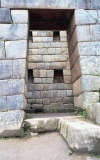
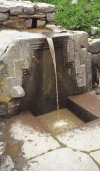


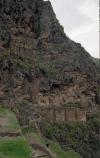
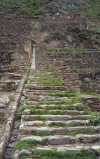

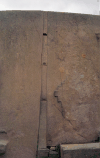



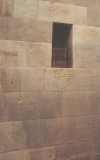
From the Machu Picchu entry in Wikipedia:
Machu Picchu is a 15th century Inca citadel, located in the Eastern Cordillera of southern Perú, on a 2,430 m (7,970 ft) mountain ridge. It is located in the Cusco Region, Urubamba Province, Machupicchu District, above the Sacred Valley, which is 80 km (50 miles) northwest of Cuzco and through which the Urubamba River flows, cutting through the Cordillera and creating a canyon with a tropical mountain climate.
Most archaeologists believe that Machu Picchu was constructed as an estate for the Inca emperor Pachacuti (1438–1472). Often mistakenly referred to as the "Lost City of the Incas" (a title more accurately applied to Vilcabamba), it is the most familiar icon of Inca civilization. The Incas built the estate around 1450 but abandoned it a century later at the time of the Spanish Conquest. Although known locally, it was not known to the Spanish during the colonial period and remained unknown to the outside world until American historian Hiram Bingham brought it to international attention in 1911.
Machu Picchu was built in the classical Inca style, with polished dry-stone walls. Its three primary structures are the Intihuatana, the Temple of the Sun, and the Room of the Three Windows. Most of the outlying buildings have been reconstructed in order to give tourists a better idea of how they originally appeared. By 1976, thirty percent of Machu Picchu had been restored and restoration continues.
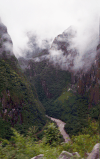
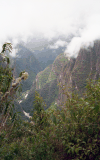
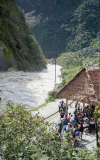


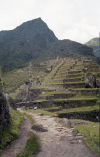


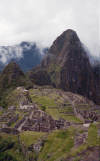














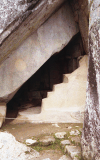
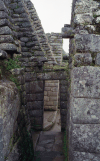



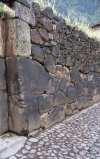


This page contains 50 pictures
Page last updated on Mon May 30 13:11:11 2022 (Mountain Standard Time)
Page last updated on Wed Apr 24 23:55:25 2024 (Mountain Standard Time)
Remnants of the Inca Empire on aerobaticsweb.org